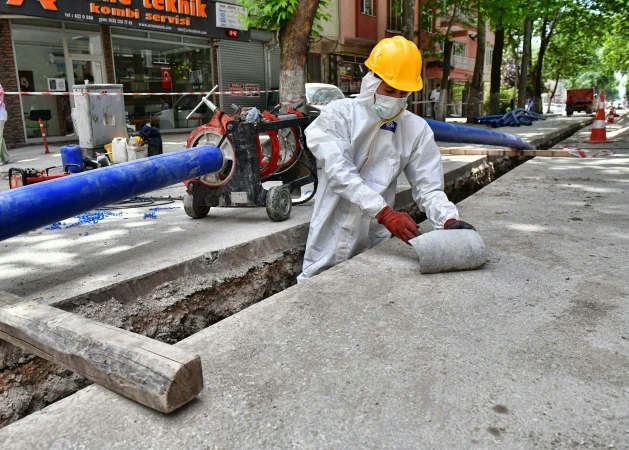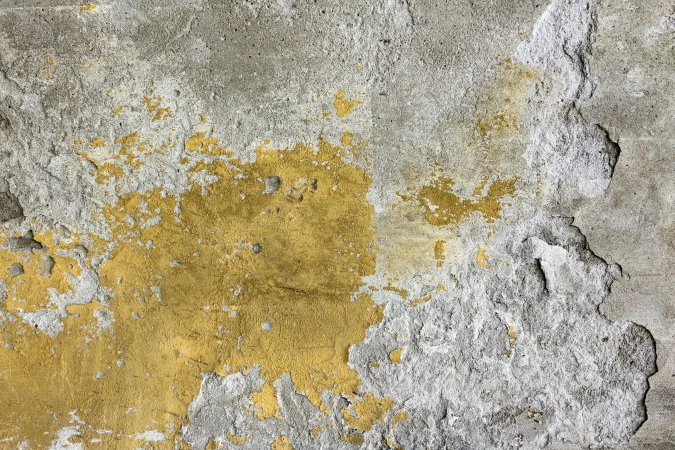Illinois Asbestos Regulations You Should Know
Hey neighbors! Welcome to our friendly corner of the internet, where we’re diving into a topic that hits close to home—literally. We’re talking about Illinois asbestos regulations and laws.
Asbestos was once popular but now it has, for good reason, gone out of style. Now the use and even removal of asbestos has been highly regulated to protect public safety, but with those Illinois asbestos regulations and laws come questions!
In this informative article, our licensed Chicago asbestos professionals break down all the important details about Illinois asbestos regulations and laws. Because let’s face it, we all want to keep our homes safe and sound while complying with public safety laws.
We’ll cover just about everything, from why asbestos was a big deal in the first place to how our state is handling it now. Whether you’re a DIY enthusiast trying to spruce up your place or just someone who wants to know more about such interesting material, we’ve got the asbestos information you need.
In addition to Illinois asbestos regulations and laws, we’ll also briefly touch on some of the national asbestos regulations and laws too. So, whether you’re sipping coffee on your porch or sneaking in a quick read during lunch break, consider this your expert guide to understanding the ins and outs of Illinois asbestos regulations.
Everything to Know About Asbestos
Asbestos is a naturally occurring mineral known for its remarkable properties that made it a popular choice in various industries, especially in construction, for much of the 20th century. Comprising six fibrous minerals—chrysotile, amosite, crocidolite, tremolite, anthophyllite, and actinolite—asbestos exhibited qualities such as heat resistance, durability, and insulating capabilities that quickly made it a popular building material option.
Why Was Asbestos Used So Commonly in the Past?
Asbestos became widespread in the past due to its exceptional fire resistance, durability, insulating properties, and affordability. Its strength and versatility made it a favored choice in several industries. This was due to the mineral’s resistance to heat, chemicals, and corrosion, coupled with its ability to absorb sound, all contributed to its usage in diverse applications.
- Construction: Asbestos found its way into countless construction materials, including ceilings, insulation, roofing materials, flooring tiles, and cement products. Its fire-resistant properties made it an attractive choice for creating safer structures.
- Automotive Industry: Asbestos was commonly used in brake linings and clutch facings due to its heat-resistant nature.
- Textiles: The mineral’s fibrous nature allowed it to be woven into fabrics, creating fire-resistant clothing and textiles.

Why Did Asbestos Get Banned?
While asbestos was widely embraced for its practical applications, the discovery of its severe health risks led to a shift in perception. Despite its widespread popularity for much of the 20th century, scientific studies began revealing the grave health risks linked to asbestos exposure. The inhalation of asbestos fibers can lead to serious and often fatal conditions such as lung cancer, mesothelioma, and asbestosis. Prolonged exposure to airborne asbestos fibers almost always results in serious health conditions.
As awareness of these health risks grew, regulatory bodies worldwide took decisive action to protect public health from the dangers of asbestos. The European Union and the US both took steps to limit the use of the once-popular material.
Is Asbestos Illegal Today?
That depends on where you are. As we mentioned before, the regulations and laws vary from country to country, and even state by state. Therefore you must understand your local Illinois asbestos laws and regulations.
In most countries, asbestos is fully banned, which includes places like the EU, UK, Australia, and Iceland. However, in the US asbestos is not fully banned and it is still legal to use in some specific products and materials.
While asbestos mining has not occurred since the early 2000s, it is still legal to import the materials. In fact, the US imported 114 metric tons of asbestos in the first three months of 2022, according to the United States International Trade Commission.
Asbestos in the US at best can only be considered partially banned, resulting from a 1989 EPA ruling. However, further attempts to fully ban the use or import of asbestos have been fought in court or abandoned in Congress. Many laws and regulations are highly specific to locations, so here are the most important Illinois asbestos regulations.
Illinois Asbestos Regulations (And Agencies)
In Illinois, there are no state laws that fully ban asbestos materials. It, like much of the country, follows the federal partial ban set forth by the EPA. According to Mesothelioma Hub, Illinois ranks 7th out of 50 states in the United States for total deaths related to asbestos exposure. Approximately 600 people die from asbestos-related diseases each year.
Since Chicago is such an industrial hub, its local counties like Cook and DuPage have the highest rates of asbestos exposure in the state. Even with such advanced rates of exposure and death, the Illinois asbestos regulations are limited. They include:
The Environmental Protection: Determining Illinois Asbestos Regulations
The Illinois Environmental Protection Act provides the legal framework for environmental protection in the state. It addresses various environmental issues, including the regulation of asbestos by establishing the Illinois EPA.
The Illinois EPA controls the rules on asbestos removal, notification requirements, and the accreditation of individuals and companies involved in asbestos-related activities. Essentially the Illinois EPA is the regulatory agency responsible for asbestos.
Illinois Department of Public Health (IDPH) Regulations
The IDPH plays a crucial role in regulating asbestos-related issues in Illinois. Specific regulations may pertain to asbestos inspections, abatement projects, and the licensing of asbestos professionals.
IDPH handles accreditation and licensing for asbestos workers, contractors, supervisors, inspectors, and management planners. They also handle notification procedures, requirements for air sampling and monitoring, water disposal, and record keeping and reporting for asbestos projects. The IDPH also provides training regulations for asbestos professionals to ensure the safety and skill of asbestos workers.
Most asbestos regulations are typically outlined in the Illinois Environmental Protection Act and the Illinois Administrative Code, specifically Title 35, Subtitle C, which covers environmental protection standards.
Asbestos School Hazard Abatement Act
This act addresses asbestos-related issues in schools, requiring inspections, management plans, and abatement activities to protect students, teachers, and staff from potential asbestos exposure.
Asbestos Project Notification Requirements
Various Illinois asbestos regulations mandate notification procedures before commencing asbestos-related activities. This ensures that appropriate authorities are informed, and necessary precautions are taken to prevent the release of asbestos fibers.
According to the National Emission Standard for Hazardous Air Pollutants (NESHAP), owners and operators must submit a $150 fee along with a Demolition/Renovation/Asbestos Project Notification Form 10 working days in advance of starting a regulated asbestos demolition or renovation project.

Chicago Asbestos Regulations
Chicago, Illinois asbestos regulations are also something that you need to be aware of. The Cook County Department of Environmental Control requires an additional permit to ensure the safe abatement and removal of asbestos during the renovation or demolition project. It must comply with asbestos/hazardous material regulations.
The Chicago Department of Public Health also requires the submission of asbestos and demolition notifications before starting asbestos projects.
If you are overwhelmed by the various Illinois asbestos regulations and laws don’t worry. A licensed asbestos professional is up to date on the current legislation and permits. They will make sure that everything is handled correctly for your project.
Do I Have to Hire a Licensed Asbestos Professional in Illinois?
If you hire a third-party contractor for asbestos abatement in schools, commercial, or public buildings then Illinois requires that they must be trained and licensed.
The City of Chicago requires a licensed contractor for any work that will disturb asbestos and building inspections before demolition, except in/on single-family homes.* (*It strongly encourages that you still hire licensed professionals).
It’s important to note that requirements may vary depending on the specific activities and the size and scope of the project. Always check with the Illinois Environmental Protection Agency (IEPA) or the Illinois Department of Public Health (IDPH) for the most up-to-date information on asbestos regulations and licensing requirements in Illinois.
Failure to comply with asbestos regulations can result in legal consequences, and hiring licensed professionals ensures that asbestos-related activities are conducted safely and by applicable laws. None of this information is meant to serve as legal advice and is simply meant to help you better understand Illinois asbestos regulations.
Need Asbestos Services Compliant with Illinois Asbestos Regulations and Laws? Get a Free Estimate
If you have an asbestos project near Chicago then you must do everything according to local laws and Illinois asbestos regulations. While there are many you need to be aware of you can rely on a licensed professional like APM to instruct you on all the forms and permits that you need.
Our team of Chicago asbestos removal professionals has completed numerous local projects and can walk you through the entire process to make it as easy as possible. Asbestos removal doesn’t have to be confusing or painful.
Contact our team today to get a FREE estimate for your project, or we can answer any questions you have regarding Illinois asbestos regulations.
Back To Blog





